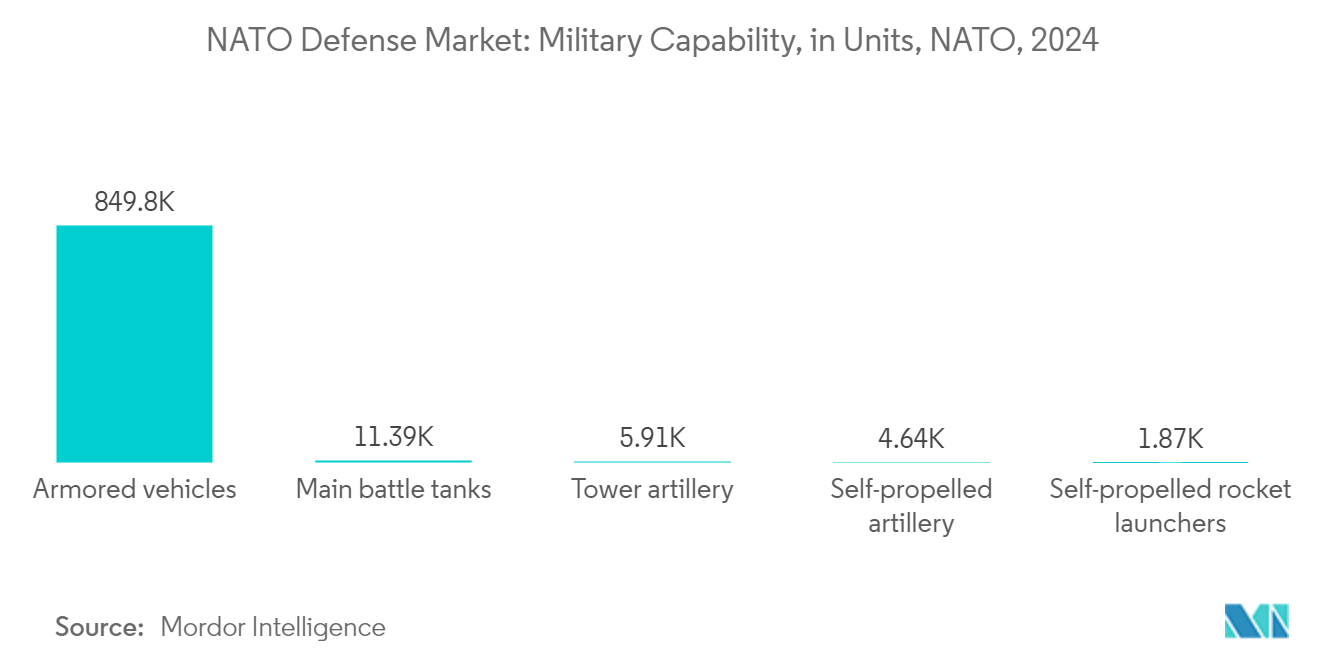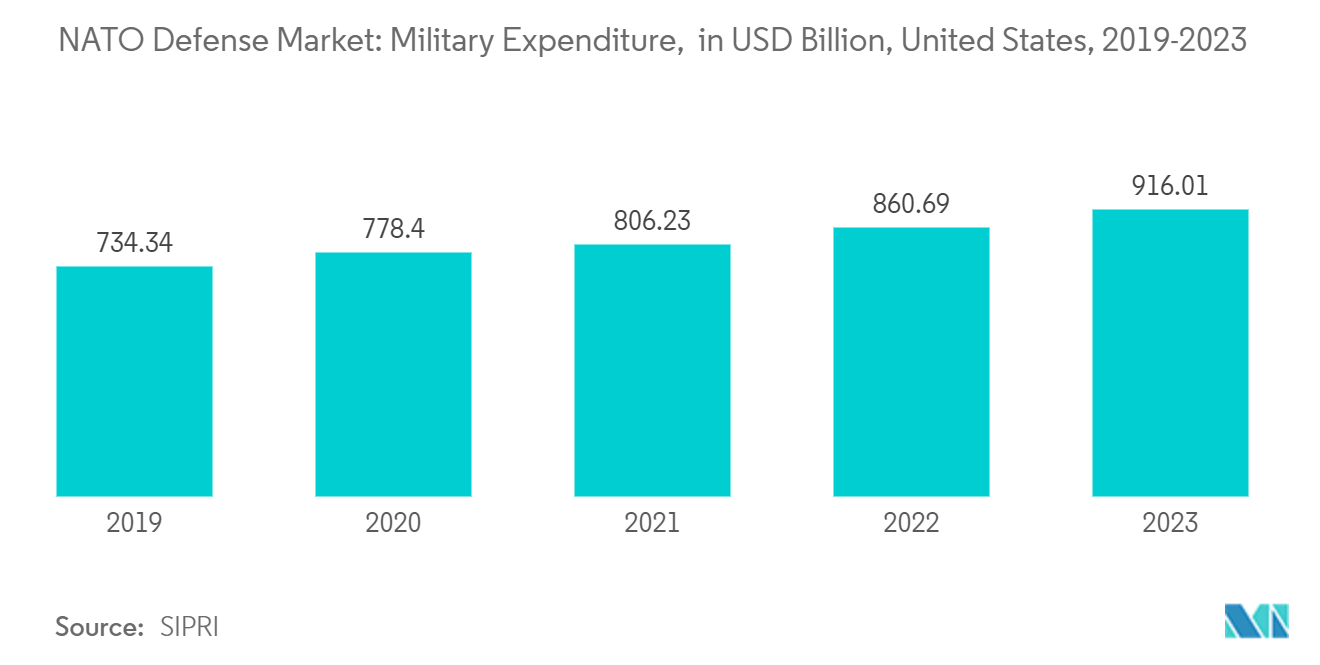Market Trends of NATO Defense Industry
The Weapons and Ammunition Segment to Showcase Significant Growth During the Forecast Period
The weapons and ammunition segment is set for significant growth during the study period. With a global military focus on bolstering ammunition reserves and a rising demand for training ammunition, the NATO defense market is poised for enhancement. This emphasis is particularly crucial as NATO forces partake in peacekeeping and counter-insurgency missions, underscoring the ongoing necessity for ammunition.
Many NATO nations are enhancing their military capabilities to respond to escalating global threats and the increased deployment of NATO forces in counter-insurgency operations. This factor, coupled with a rise in small ammunition procurement and heightened defense expenditures, drives growth in this segment.
Advancements in arms ammunition technology are reshaping the defense arena. The quest for precision and efficiency has led to the development of smart ammunition, featuring sensors that provide soldiers with real-time battlefield data, aiding their decision-making. Countries are making substantial investments in modernizing their arsenals. For instance, the European Union and NATO members have significantly supported Ukraine's defense initiatives, offering ammunition, intelligence, maintenance, and substantial funding.
On this note, the European Union earmarked USD 2.6 billion from its European Peace Facility for Ukraine. Furthermore, in March 2022, a US and UK-led EUCOM Control was established to streamline national contributions to Ukraine. Germany, a prominent player, witnessed a 12% surge in its weapon exports in the first half of 2023, totaling USD 4.89 billion, with a notable portion directed to Ukraine. Hungary, Cyprus, the United States, and France also emerged as significant beneficiaries of Germany's arms industry.

The United States is Expected to Dominate the Market During the Forecast Period
During the forecast period, the United States is poised to maintain its market dominance, fueled by a surge in defense spending and a pronounced focus on bolstering its capabilities. In 2023, the US-led global defense expenditures allocated a substantial USD 916 billion. This budget primarily targeted capability enhancements and innovations, solidifying the nation's competitive edge. With market players ramping up investments, a rising appetite for advanced weaponry, and a pressing need for heightened security, the defense sector is witnessing significant growth.
The ongoing conflict between Russia and Ukraine, political tensions involving NATO and Russia, and escalating cross-border disputes in Asia-Pacific and the Middle East are driving nations to bolster their defense capabilities. The US military's global footprint spans over 150 countries, with a notable portion of its personnel stationed permanently abroad, excluding regions like Afghanistan, Iraq, and Syria. Beyond active combat, US troops are engaged in peacekeeping missions, serve as military attachés, and are involved in embassy and consulate security, among other classified assignments. These deployments have notably fueled the US Armed Forces' procurement of arms and ammunition. Heightened battlefield capabilities from China and Russia have prompted the United States to ramp up investments in advanced weaponry. Furthermore, the country's involvement in NATO missions abroad is amplifying the demand for diverse ammunition types.
In the 2024 defense budget proposal, the Department of Defense was eyeing a USD 974 million investment for the production of 155 mm M1128 projectiles. The US Army's procurement plan for 2024 comprises 16,950 rounds. Notably, American Ordnance and General Dynamics Ordnance & Tactical Systems are set to manufacture these M1128 projectiles for the US Army.


